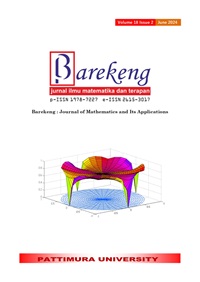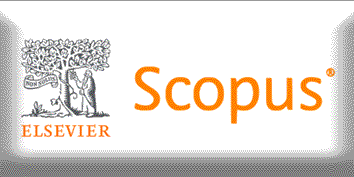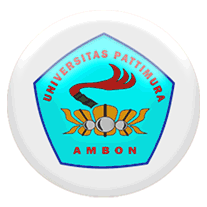MODELING THE SPREAD OF COVID-19 DISEASE WITH TIME DELAY IN PONTIANAK CITY
Abstract
Coronavirus disease 2019 (COVID-19) is an infectious disease caused by a coronavirus originating from the city of Wuhan in 2019. This disease affects the respiratory system. The city of Pontianak has the highest population density in West Kalimantan. This density results in a higher spread of Covid-19. In this article, the spread of COVID-19 is formulated into a mathematical model, equilibrium points are sought, stability is analyzed, and a delay time is introduced to reduce the spread of COVID-19. The magnitude of the delay time given during quarantine complies with health protocols, which is between 2 – 14 days. This article aims to analyze the influence of the delay time in modeling the spread of Covid-19. The problem of COVID-19 spread is constructed into an SIQR model, with a sub-population of recovered individuals returning to the susceptible sub-population. The population is divided into four sub-populations: susceptible (S), Infected (I), Quarantined (Q), and Recovered (R). The parameters used include the natural birth rate ( ), the rate of susceptibility to infection ( ), the rate of infection under quarantine ( ), the recovery rate from infection ( ), the recovery rate from infection under quarantine ( ), the death rate from infection ( ), the death rate under quarantine ( ), the delay time from infection to quarantine process ( ), the natural death rate ( ), and the rate of recovered immunity returning to susceptibility ( ). The simulation results show that when the basic reproduction number is less than , the disease-free equilibrium is stable, and when the basic reproduction number is greater than , the endemic equilibrium point is stable. The addition of a time delay ( ) in the SIQR model affects the stability of the endemic equilibrium point but does not affect the stability of the disease-free equilibrium point.
Downloads
References
Rauf Eka Ubaya Taruna, Sahrudin. Analisis Tugas Polisi Pamong Praja Dalam Pencegahan Dan Pengendalian Covid-19. Jurnal Progres Administrasi Publik 2022; 2: 12–19.
Afwan MI, Helma. Pemodelan Matematika Penyebaran Penyakit Covid-19 Dengan Menggunakan Model SIRS. UNPjoMath 2021; 4: 34–40.
Widowati, Sutimin. PEMODELAN MATEMATIKA. Semarang.
Huo Hai-Feng, Feng Li-Xiang. Global Stability of an Epidemic Model with Incomplete Treatment and Vaccination. Hindawi Publishing Corporation 2012; 2012: 1–14.
Xu Jie, Zhang Tiansi. Dynamic Analysis for a SIQR Epidemic Model with Specific Nonlinear Incidence Rate. Journal of Applied Mathematics and Physics 2019; 1840–1860.
Mukherjee D. Stability Analysis of an S-I Eoidemic Model With Time Delay. Mathl Comput 1995; 24: 63–68.
Lu H, Ding Y, Gong S, et al. Mathmetatical Modeling and Dynamic analysis of SIQR With Delay for Pandemic Covid-19. Mathematical Biosciences and Engineering 2021; 18: 3197–3214.
Manaqib M, Azizah M, S EH, et al. Analisis Model Matematika Penyebaran Penyakit Covid-19 Dengan Lockdown dan Karantina. Barekeng : Jurnal Ilmu Matematika dan Terapan 2021; 15: 479–492.
Pasaribu M, Helmi. Aplikasi Persamaan Diferensial Stokastik Pada Masalah Kontrol Optimum Berkendala. Barekeng: Jurnal Ilmu Matematika dan Terapan 2021; 15: 257–266.
Bronson R, Costa GB. Persamaan Diferensial. In: Simarmata L, Prasetyo T (eds). Ciracas, Jakarta, 2007.
Kuang Y. Delay Differential Equations With Applications in Population Dynamic. 1993.
Masita, Darmawati, Fardinah. Pemodelan Matematika SEIqInqR Pada Penyebaran Covid-19. Journal of Mathematics: Theory and Applications 2021; 3: 31–37.
Suryani I, Wartono, Aprijon, et al. Kestabilan Model Sird Penyebaran Penyakit Ebola Dengan Pengaruh Adanya Migrasi. Seminar Nasional Teknologi Informasi, Komunikasi dan Industri 2019; 11: 494–504.
Yulida Y, Karim MA. Pemodelan Matematika Penyebaran Covid-19 Di Provinsi Kalimantan Selatan. Open Jurnal Systems 2020; 14: 3257–3264.
Perco Lawrence. Differential Equations and Dynamical System. New York: Springer-Verlag.
Copyright (c) 2024 Fatma Arum Fatonah, Evi Noviani, Meliana Pasaribu

This work is licensed under a Creative Commons Attribution-ShareAlike 4.0 International License.
Authors who publish with this Journal agree to the following terms:
- Author retain copyright and grant the journal right of first publication with the work simultaneously licensed under a creative commons attribution license that allow others to share the work within an acknowledgement of the work’s authorship and initial publication of this journal.
- Authors are able to enter into separate, additional contractual arrangement for the non-exclusive distribution of the journal’s published version of the work (e.g. acknowledgement of its initial publication in this journal).
- Authors are permitted and encouraged to post their work online (e.g. in institutional repositories or on their websites) prior to and during the submission process, as it can lead to productive exchanges, as well as earlier and greater citation of published works.






1.gif)



